The attention paid in the last few weeks to the cost of textbooks and the promise, as well as the risk, of moving to e-texts has prompted me to consider the above question.
Some of the recent reportage has focused on e-textbooks as a way to reduce the costs students must pay for course materials; this article in USA Today is an example of this kind of story. There have also been several comments from open access advocates supporting the move toward open online textbooks; see this post by Georgia Harper and this one from Peter Suber.
There has also been some commentary recently on the abuse of new models of textbook distribution. The Boston Globe ran this article on “Textbooks, free and illegal, online” just a few days ago. It is unfortunate, but hardly surprising, that it is only in this article about “pirated” textbooks that the Association of American Publishers is quoted; they could do so much more if they were actively involved in a positive solution that could reduce textbook costs and improve access. But it is the faculty who write the textbooks who are quoted as seeking a legal solution, while the publishers merely resort to heavy-handed enforcement measures for a law that is rapidly becoming unenforcable in a technological environment for which it was never designed. The fuss usually works in individual cases — the Chronicle of Higher Education reports today that the specific site discussed is off-line — but it is ineffective to stem the digital tide.
But faculty do not come out unscathed in this discussion either, as is clear from this post about the practice of professors commissioning “custom” textbooks and receiving “royalties,” which William McGeveran of the University of Minnesota Law School calls “kickbacks,” from the required purchases by their students.
The lesson here seems to be that the digital environment is inevitably going to change the environment for textbooks as it has for most other kinds of intellectual property, for good or for ill. Georgia seems to feel that the publishers will eventually figure the market out and move to new profit models while supporting open access. But I think there is also an opportunity here for institutions to be more proactive and seek ways to invest in open access textbooks on a campus-wide level.
Why should schools consider doing this. First, with all the pressure that institutions of higher education are under to reduce the costs for students to attend, open access textbooks offers an avenue for proactive investment that will simultaneously reduce student costs and encourage faculty scholarship. Second, this is a place where universities actually can help combat copyright infringement. Universities have been made the scapegoats in the file-sharing wars, but there is really not a lot they can do to ameliorate that problem, especially since the vast majority of music and movie file-sharing does not occur over college and university networks. But by supporting open access to e-textbooks, we really can reduce the problem of infringement in that realm.
How can universities invest their funds in ways that will encourage open access textbooks and reduce costs (and therefore the incentive to infringe copyright) for students? I can think of three ways, off hand.
First, institutions could invest in infrastructure that would encourage new models for electronic course content. This means a great deal more than simply providing the storage space necessary for an institutional repository. Universities also need to support their faculty authors in efforts to retain copyright so that they can deposit their works in an IR and create new and unanticipated derivative works from those publications. The opportunity to combine materials located in an institutional repository in new ways would create a different spin on the custom textbook; it would offer a heretofore unimagined flexibility based on legal rights retained by the authors of the component parts and licensed to institutions or, using a Creative Commons license, to a broader group of users.
Second, universities and consortia could bring their purchasing power to bear to negotiate multi-user licenses for existing e-textbooks or new ones created in the commercial market. The current models all rely on students to each pay individually a licensing fee (putatively lower than the purchase cost of a hard copy) to obtain access, for a limited time, to an e-text. Multi-user site licenses could further reduce the price per user and give the university flexibility about whether to assess each student user for that lower cost or simply cite the funding to legislators as an investment in reducing student costs.
Finally, universities could make funds available for faculty to encourage the development of open access texts. There has been a great deal of talk recently about funding to support open access via “hybrid” publishing — traditional publications onto which an open access alternative is grafted if the author, or her institution, is willing to pay an added fee. It seems to me that a much wiser investment, and one with a greater return for the dollars spent, could be made by turning those funds to support faculty who want to create online open access textbooks that can be used by students on their own campuses and by others who teach similar courses. Adaptation by others, in that case, would provide an effective “peer-review” to measure the quality of the faculty author’s contribution. In this way, student costs could be reduced, faculty scholarship supported, and the real potential of the digital environment for collaborative learning more fully exploited.

